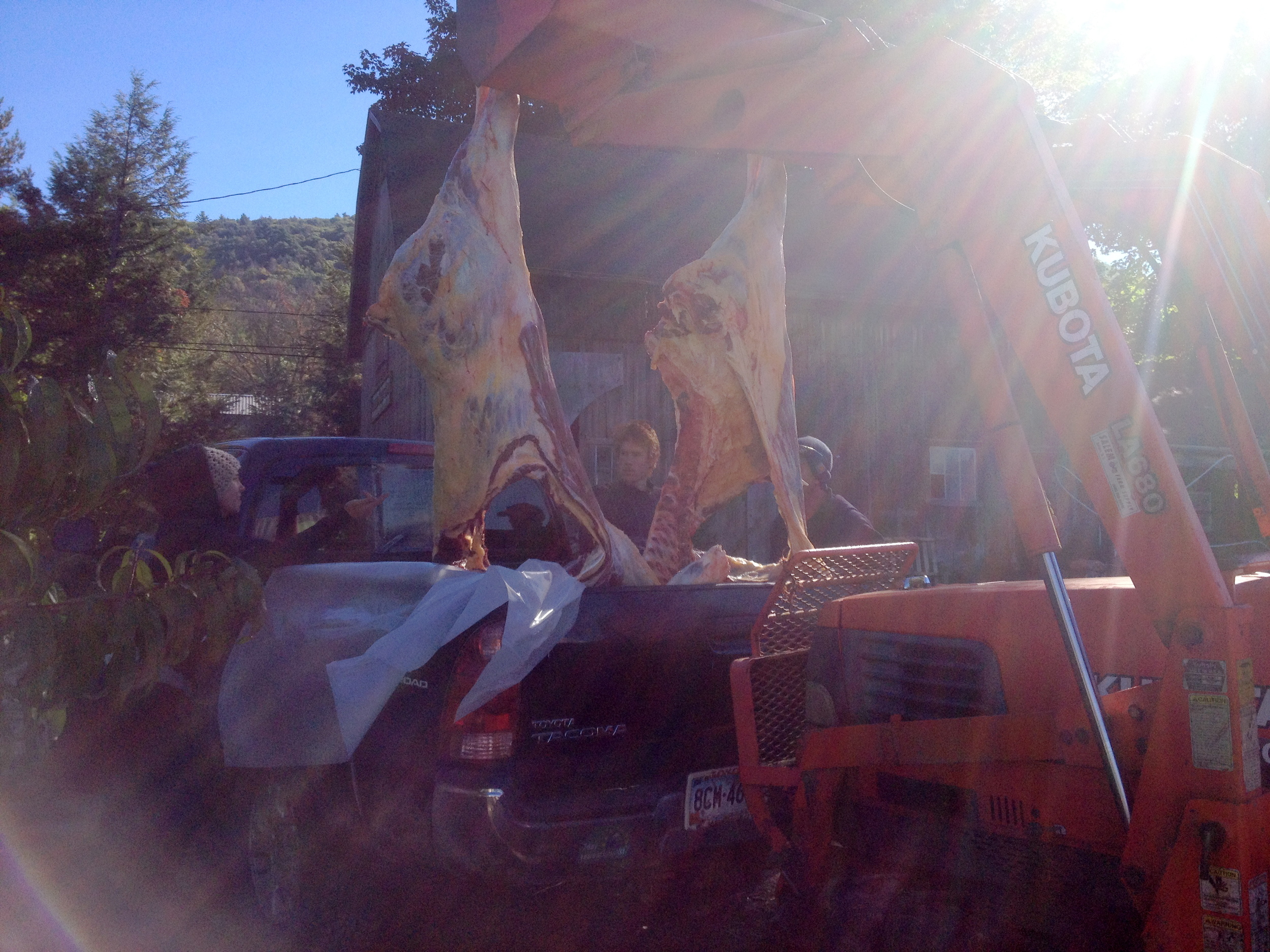This week back from my mimi-vacation was half vacation continuation and half return to the hard work of farming. On the one hand, the days were beautiful, sunny and mild; the leaves have started changing, and I took a break from my pile of "serious" reading with three perfectly diverting mystery novels. On the other hand, we harvested a miraculously bountiful (and heavy) crop of winter squash, loaded up a delivery of hay into the loft, and slaughtered the bull in addition to our usual harvest and delivery schedule. Not to mention a pair of frosty nights! We brought the space heaters out of storage in the barn, and I dusted off my teapot and travel mug. I also dusted off the old resume, and I've been gearing up to start planning my winter and subsequent farming season in earnest. A few farm visits last weekend spurred me to start the process, and I've been doing some thinking about what I want my winter to look like. It seems like I've been finding myself in this place on a regular basis, where I know almost nothing about what my immediate future holds. I guess that in some ways I've grown used to the annual fielding of the "what next?" question, the packing of the boxes or the backpack or the truck, the journey to the new place filled with new people. In another way, I'll be glad if I can find that place that can meet most of my agricultural-educational needs and stay there for a few years. There are not many places that would fit the bill, and if they won't have me I'll have to continue my patchwork, migratory lifestyle for awhile. Either way, adventure awaits!
Thinking about: lengthening shadows, good friends, big moons
Reading: Martin Walker's Bruno Chief of Police, Jacqueline Winspear's Birds of a Feather
Eating: fried potatoes, beets and onions with wilted chard and eggs over easy; pork tacos with bell peppers, serranos, sweet corn, onions, tomatoes and avocado











